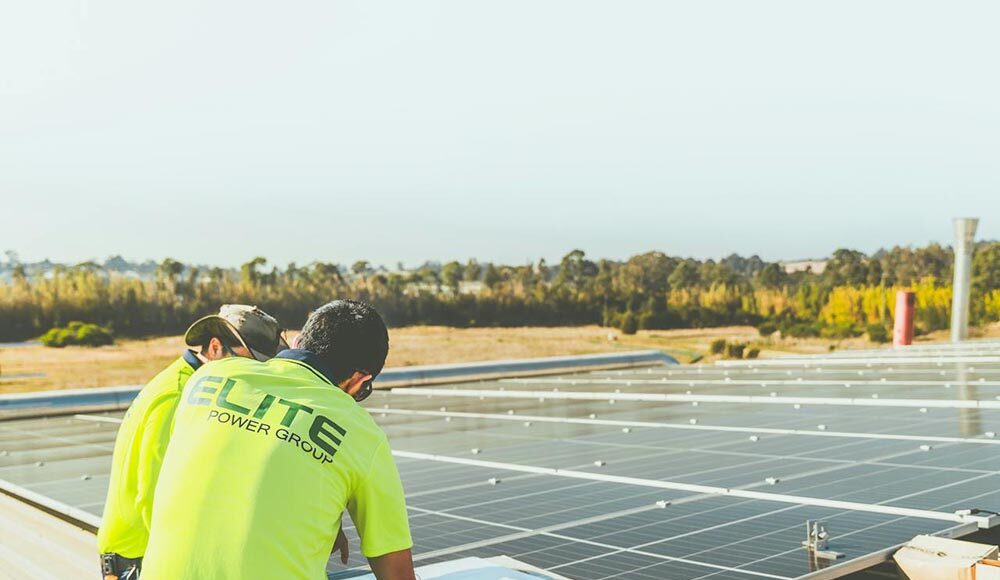Embarking on a DIY solar panel installation project can be a rewarding experience, granting you greater control over your solar energy system and potentially leading to significant long-term savings.
This step-by-step guide is designed to walk you through the entire installation process, from understanding the basics of solar panels to installing the panels on your roof and connecting them to your home’s electricity supply. Whether you’re a seasoned DIY enthusiast or a newcomer to the world of solar power, this guide will provide everything you need to successfully install your solar panels and start harnessing the power generated by solar. Let’s dive in!
Understanding Solar Panels
What is a Solar Panel?
A solar panel, also known as a photovoltaic (PV) panel, is a device that converts sunlight directly into electricity. It comprises numerous solar cells, which are made of semiconductor materials, typically silicon. When sunlight strikes these cells, it excites electrons, creating an electrical current. This current is DC (direct current) electricity, which then needs to be converted to AC (alternating current) electricity by an inverter for use in most homes. Understanding how a solar panel functions is fundamental before beginning your solar panel installation journey, as it provides insight into the entire solar panel system.
Types of Solar Panels
When exploring types of solar panels, you’ll encounter several options. These options differ in their construction, efficiency, and cost, and include:
- Monocrystalline panels, known for offering the highest efficiency and longevity.
- Polycrystalline panels, crafted from multiple silicon crystals and providing a more affordable alternative.
- Thin-film panels, manufactured by depositing thin layers of semiconductor material onto a substrate, offering flexibility and light weight.
The choice between these types of solar panels depends on your budget, available roof space, and desired power output.
Benefits of Solar Panel Installation
The benefits of solar panel installation extend far beyond just reducing your monthly electricity bill. By installing a solar panel system, you’re contributing to a cleaner environment by reducing reliance on fossil fuels. The power generated by solar is a sustainable energy source. Moreover, a solar panel installation can increase your home’s value and provide energy independence. Many governments offer incentives. With proper maintenance, a solar panel can last for decades, providing clean and affordable solar power. Consider all the advantages before deciding to install your solar panels.
Planning Your Solar Panel System
Calculating Your Energy Needs
Before diving into the solar panel installation itself, you need to accurately calculate your energy needs. Analyze your past electricity bills to determine your average monthly consumption. Consider seasonal variations, as you might use more electricity during summer or winter. Once you have a clear picture of your energy usage, you can determine the appropriate size of your solar panel system. This calculation involves factoring in the amount of sunlight your roof receives, the efficiency of the solar panels, and the desired percentage of your energy needs you want to offset with solar power. Think about this as a first step.
Choosing the Right Solar Panel Kit
Selecting the right solar panel kit is crucial for a successful DIY project. These kits typically include several essential components:
- Solar panels, which are the primary energy generators.
- An inverter, which converts the DC power from the panels to AC power for your home.
Beyond these core components, you’ll often find mounting hardware and wiring included as well. When choosing a kit, consider the quality and efficiency of the solar panels, the suitability of the mounting hardware for your roof type, and the compatibility of the inverter with your home’s electrical system. Some kits also include batteries for energy storage, allowing you to use solar power even when the sun isn’t shining. Read reviews and compare specifications to ensure you’re getting a reliable and suitable solar panel system for your installation.
Necessary Tools for Installation
Proper tools are essential for a safe and efficient solar panel installation. You need a variety of tools, including:
- Basic tools such as a drill, screwdriver, wrench, and measuring tape.
- Specialized tools like a roof anchor installation kit and a torque wrench may be needed for mounting the panels on the roof.
- A voltage tester is crucial for verifying electrical connections.
- Safety equipment, including gloves, safety glasses, and a hard hat.
If you are installing a solar panel system on a pole, or a ground mount, be sure to adjust the appropriate tools that you need. With the right tools and preparation, the installation process will be smoother and safer.
The Installation Process
Mounting Solar Panels
Here is where the physical labor begins. Installing the panels properly is crucial for the longevity and efficiency of your solar panel system. Begin by carefully mounting the racking system onto your roof, ensuring it’s securely attached and aligned according to the manufacturer’s instructions. This often involves attaching the racking to the roof rafters for maximum stability. Once the racking is in place, carefully lift each solar panel and mount it onto the racking, connecting it with the provided hardware. Ensure that each panel is firmly secured and that all panels are aligned correctly. The angle at which you install your solar panels will have a large effect on the power generated by solar. Think about this.
Connecting the Inverter and Battery
With the solar panels securely mounted, the next step is connecting them to the inverter. The inverter converts DC electricity into AC electricity. Follow the manufacturer’s instructions to wire the solar panels to the inverter, paying close attention to polarity and voltage requirements. If your solar panel kit includes a battery for energy storage, connect the battery to the inverter as well. Double-check all connections to ensure they are secure and properly insulated. Be sure to install fuses or breakers to prevent shorts.
Finalizing the Installation
The final step of the installation process involves testing the solar panel system to ensure it’s functioning correctly. Turn on the inverter and monitor the output to verify that it’s generating electricity. Use a multimeter to check the voltage and current of each solar panel and the battery, if applicable. If you encounter any issues, consult the manufacturer’s troubleshooting guide or contact a qualified electrician. Once you’ve verified that the solar panel system is working properly, you can begin enjoying the benefits of clean, renewable solar power. Remember to monitor your system’s performance regularly to ensure optimal efficiency and savings. Also remember that diy projects do not require a certificate from a professional, but you need to ensure you are following all your local safety standards.
FAQs about DIY Solar Panel Installation
Common Questions About Solar Panel Installation
Many people considering a DIY solar panel installation have similar questions. One common concern is whether a homeowner can truly install solar panels themselves. The answer is yes, but it requires careful planning, research, and adherence to safety guidelines. Another frequent question revolves around the permits you need for a solar panel installation. This varies by location, so check with your local authorities before beginning the installation process. Additionally, many wonder about the lifespan and warranty of DIY solar panel kits. Most reputable manufacturers offer warranties, but it’s important to read the fine print to ensure the solar system and panels are fully covered. Remember, DIY also means you will be responsible for the installation so make sure you do it right!
Maintenance Tips for Your Solar Panel System
To ensure your solar panel system operates at peak efficiency for years to come, regular maintenance is crucial. Regularly cleaning the solar panels is essential. Periodically inspect the wiring and connections to ensure they are secure and free from corrosion. Check the inverter regularly to ensure it’s functioning properly. If you notice any significant drop in power generated by solar, consult a qualified technician to diagnose and address the issue. Does not require advanced skills but doing this tasks will prolong the life of your solar panels.
Cost Considerations and Savings
While a DIY solar panel installation can lead to significant savings over time, it’s essential to carefully consider the upfront costs. The price of solar panel kits varies depending on the size, type, and efficiency of the panels, as well as the included components like the inverter and batteries. Factor in the cost of any necessary tools and equipment you may need to purchase. Remember you need to apply for permits for the installation, which can involve additional fees. However, the long-term savings from reduced electricity bills can offset these initial expenses. Additionally, many governments offer tax credits, rebates, and other incentives to encourage solar power adoption, further reducing the overall cost and increasing your potential savings. Think about this, here is why installing a solar panel system is cheaper.
##





